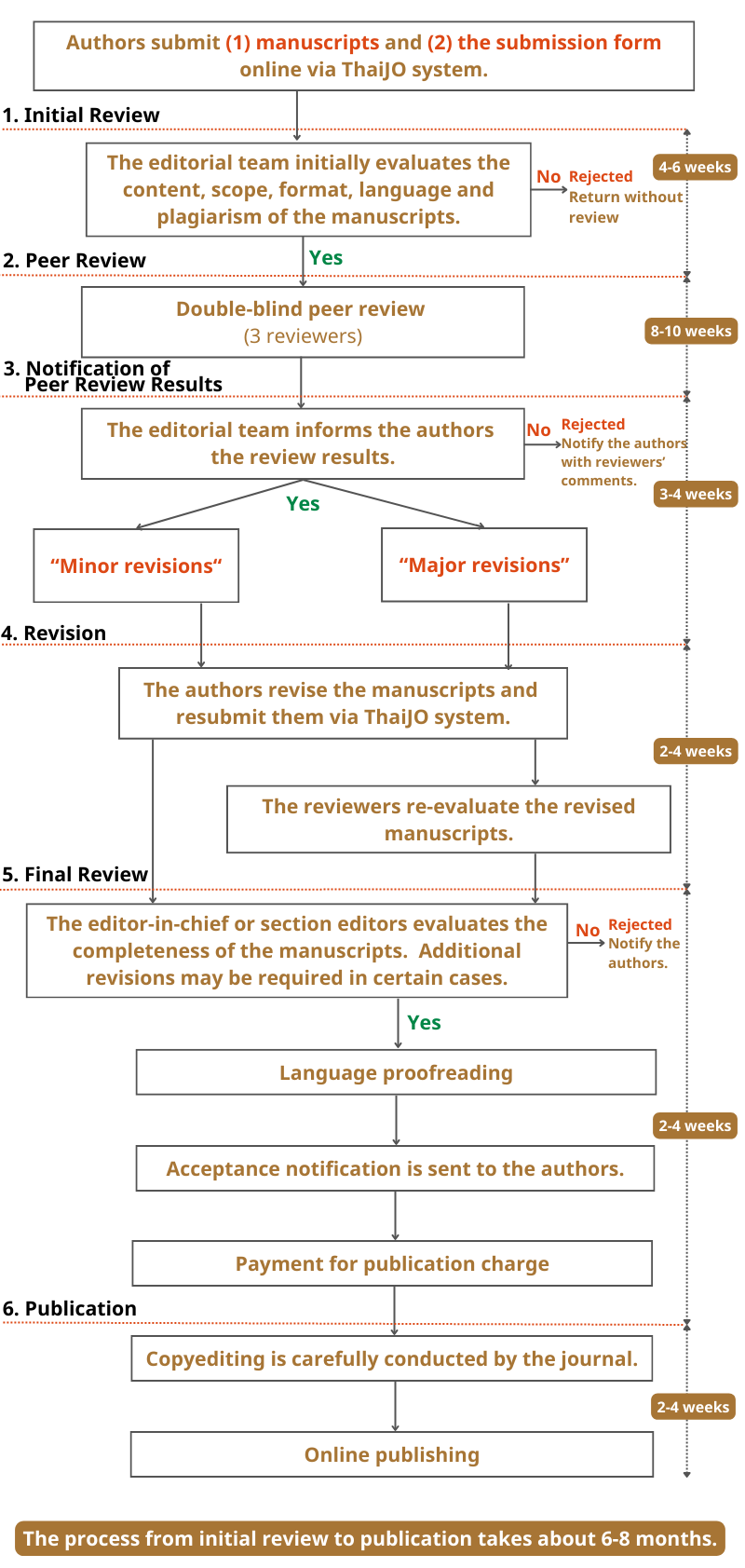Peer Review Process
The SJSS publishes research articles, academic articles and book reviews. All types of articles are required to go through the following peer review process.

1. Initial Review
The editorial team considers the content of the submitted manuscripts to ensure that it is within the scope of the SJSS. The format, writing, and language are also evaluated in this phase. Finally, plagiarism is checked by Turnitin. This initial review process takes approximately 3 weeks.
The submitted manuscripts can be rejected during the process due to one of the following reasons:
1.1 The content of the article does not lie within the scope of the SJSS.
1.2 Over 30% content similarity is found in the plagiarism checking process.
1.3 There is no significant academic contribution.
1.4 There are no real practical implications from the study or research.
1.5 The article is illegible due to poor formatting, presentation, or language use.
1.6 Reference styles are not correct.
2. Peer Review
The editorial team selects three reviewers who are considered experts in the area of the submitted manuscripts. The selected reviewers must also be from different institutions from the authors. The SJSS uses a double-blind review, which means that the identities of both the reviewers and authors are hidden from one another. The peer review process takes approximately 4-8 weeks.
3. Notification of Peer Review Results
The editorial team is responsible for the final evaluation decision. There are four potential results as follows:
3.1 Accepted without revisions: In this case, the paper is deemed ready for publication without any further revisions required. The authors will receive an acceptance letter shortly thereafter and the publication charge is applied.
3.2 Accepted with minor revisions: If the article falls under this category, the authors will need to make some minor changes based on the reviewers' comments.
3.3 Accepted with major revisions: If the paper receives this answer, the decision for publication is put on hold due to identified problems.
3.4 Rejected: If the paper falls under this category, it means that the reviewers have identified considerable critical problems pertaining to the research methodology, strength of the argument presented, lack of empirical data, or serious technical issues, among others. Thus, it is rejected. The authors will be provided with detailed feedback from the reviewers to help them enhance the paper's quality for potential future submission.
4. Revision
Authors of manuscripts classified as 3.2 (Accepted with Minor Revisions) and 3.3 (Accepted with Major Revisions) are required to address all reviewer comments thoroughly and submit correction forms that clearly detail how each comment has been resolved. Revised manuscripts under 3.3 will be evaluated by the editorial team unless the reviewers specifically request to review the revisions themselves. The revision process typically requires 4–6 weeks for completion.
5. Final Review
The Editor in Chief reviews the completeness of the revised manuscripts and makes the final decision. If the article is deemed ready for publication, an official acceptance letter will be issued to the authors. In some cases, however, additional revisions may be required before acceptance.
Upon receiving the official acceptance, authors are required to pay a publication fee of 120USD or 4,000 THB. Payment must be made directly to the Suranaree University of Technology’s bank account, and the receipt must be submitted to SJSS for confirmation.
Finally, all accepted manuscripts in English must undergo proofreading by a native speaker. Authors are encouraged to use one of the recommended proofreaders provided by SJSS. This process should take around 3 weeks.
6. Publication
After the manuscript is finalized, the journal carefully conducts copyediting to ensure accuracy and quality before publication on the SJSS website. Authors are required to thoroughly review the copyedited version, as no further changes can be made after this stage. The publication preparation process typically takes 2 weeks.

